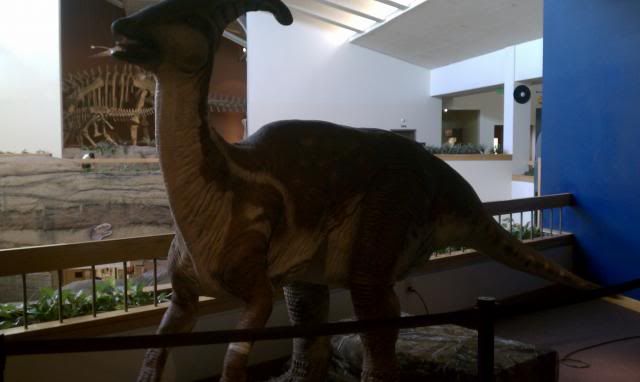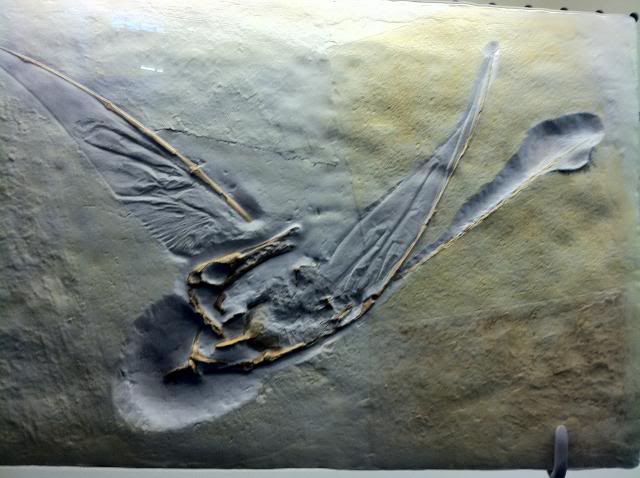Last month’s challenge was not very challenging seeing as how Isotelus was able to give the correct answer within hours of when the blog was posted. She said it gave her some trouble, but I actually highly doubt that.
Partial skull of Parasaurolophus. I would say P. tubicen because the crest is a bit different from P.walkeri, and it’s definitely not P. cyrtocristatus. Also it’s from New Mexico so it makes sense to be in the NM museum. SCIENCE.
This skull did indeed belong to Parasaurolophus tubicen, which stands for trumpeter-crested lizard.

(Taken at The New Mexico Museum of Natural History and Science)
Parasaurolophus are extremely rare animals in the fossil record. There are three species known to science found in Alberta (Canada), New Mexico (USA), and Utah (USA). In each area, only a few specimens have been found and all specimens are incomplete. P. tubicen is only known from New Mexico with three specimens discovered. Parasaurolophus lived during the Late Cretaceous 76 to 73 million years ago. P. tubicen reached a size of ~9.5 meters in length and weighed ~ 2.5 tons. P. tubicen was an herbivore and most likely walked on four legs, but was able to run, walk, and brows on its hind limbs.
Even though it is rare, it is still one of the most famous dinosaurs, and that is most likely due to the eye-catching aspect of P. tubicen. The crest that grows from the rear of its skull is fairly unique. The crest is hollow and allowed air to be pushed through it. This would have allowed P. tubicen to make very loud trumpeting noises. The crests were also most likely colorful and could have acted as visual displays. P. tubicen would have filled the Late Cretaceous with beautiful music while communicating with one another over large areas. P. tubicen belongs to the hadrosaurid clade, which is one of the most famous ornithischian clades as well.
Moving on to this month’s challenge:

(Taken at the New Mexico Museum of Natural History and Science)
Good luck to everyone that plays.
One thought on “Know Your Bones: December 2014”